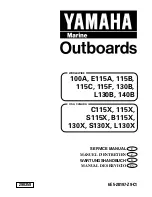
11
Chapter 3
Using the DE0-Nano Board
This chapter gives instructions for using the DE0-Nano board and describes in detail its components
and connectors, along with the required pin assignments.
3
3
.
.
1
1
C
C
o
o
n
n
f
f
i
i
g
g
u
u
r
r
i
i
n
n
g
g
t
t
h
h
e
e
C
C
y
y
c
c
l
l
o
o
n
n
e
e
I
I
V
V
F
F
P
P
G
G
A
A
The DE0-Nano board contains a Cyclone IV E FPGA which can be programmed using JTAG
programming. This allows users to configure the FPGA with a specified design using Quartus II
software. The programmed design will remain functional on the FPGA as long as the board is
powered on, or until the device is reprogrammed. The configuration information will be lost when
the power is turned off.
To download a configuration bit stream file using JTAG Programming into the Cyclone IV FPGA,
perform the following steps:
1. Connect a USB Mini-B cable between a host computer and the DE0-Nano.
2. The FPGA can now be programmed through the Quartus II Programmer by selecting a
configuration bit stream file with the .sof filename extension.
Configuring the Spansion EPCS64 device
The DE0-Nano board contains a Spansion EPCS64 serial configuration device. This device
provides non-volatile storage of the configuration bit-stream, so that the information is retained
even when the power supply to the DE0-Nano board is turned off. When the board’s power is
turned on, the configuration data in the EPCS64 device is automatically loaded into the Cyclone IV
E FPGA.
The Cyclone IV E device supports in-system programming of a serial configuration device using
the JTAG interface via the serial flash loader design. The serial flash loader is a bridge design for
the Cyclone IV E device that uses its JTAG interface to access the EPCS .jic file and then uses the
AS interface to program the EPCS device.
Figure 3-1
illustrates the programming method when
adopting a serial flash loader solution. Chapter 9 of this document describes how to load a circuit to
the serial configuration device.
Содержание De0-Nano
Страница 1: ...1 ...
Страница 4: ...4 9 3 Revision History 155 9 4 Copyright Statement 155 ...
Страница 44: ...44 Figure 6 5 Browse to find the location Figure 6 6 There is no need to test the driver ...
Страница 90: ...90 Figure 7 14 Add NIOS II Processor ...
Страница 91: ...91 Figure 7 15 Nios II Processor 9 Click Finish to return to main window as shown in Figure 7 16 ...
Страница 93: ...93 Figure 7 17 Rename the CPU 1 Figure 7 18 Rename the CPU 2 ...
Страница 98: ...98 Figure 7 23 Add On Chip Memory ...
Страница 100: ...100 Figure 7 25 Update Total memory size ...
Страница 102: ...102 Figure 7 28 Update CPU settings ...
Страница 104: ...104 Figure 7 30 Add PIO ...
Страница 106: ...106 Figure 7 32 PIO 21 Rename pio_0 to pio_led as shown in Figure 7 33 Figure 7 33 Rename PIO ...
Страница 113: ...113 Figure 7 43 Input verilog Text Figure 7 44 Open DE0_NANO_SOPC v ...
Страница 146: ...146 Figure 8 16 Display Progress and Result Information for the SDRAM Demonstration ...
Страница 150: ...150 Figure 9 3 Select Devices Page ...
Страница 151: ...151 Figure 9 4 Convert Programming Files Page ...












































